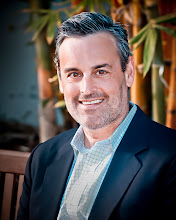"I believe that imagination is stronger than knowledge...myth is more potent than history...dreams are more powerful than facts...hope always triumphs over experience...laughter is the cure for grief...love is stronger than death"
- Robert Fulghum
Now that I'm approaching my middle years, I rarely exchange gifts with other people even on birthdays, anniversaries and Christmas.
Sure...there's that mid-priced bottle of wine that a friend may bring to dinner...the one that you open immediately and share with ones who just gave it to you...
There are gifts of cash and a congratulatory card presented to a young couple at their wedding...
I might also trade small "stocking stuffer" gifts with my children during the holidays... receiving perhaps a small box of my favorite candy in return for four years of college tuition.
Truth be told...I don't really need any more stuff at this point in my life. I have all the stuff I want or need.
For me, the best gift I can hope to receive is to spend quality time with my friends and loved ones...doing things I like to do...like laughing out loud.
As a rule, I enjoy people far more than I enjoy things. Mostly, I enjoy making memories that accompany spending quality time with those people who matter most in my life.
Rules are indeed meant to be broken...
On a beautiful crisp Saturday afternoon sometime between Thanksgiving and Christmas a few years ago, my girlfriend Susan and I found ourselves at the local Costco to pick up a few items. (Aside: To me, Costco is the opposite of the low-priced 99¢ store...in fact...I'll typically refer to Costco as the $99 store...in that it is hard to leave without spending at least $99...mostly on things I really don't need)
As after we entered the store, Susan and I separated...so she could find what she needed to buy, and I could go visit the book section.
Upon my arrival in the book department, my eyes quickly met the complete 3-volume collection of Calvin & Hobbes cartoons on a table before me. I picked up one of the volumes, opened it to the middle and began to read.
As I read the first few comic panels, I began to giggle a bit...the giggles quickly turned to chuckles and snorts...and then full-fledged laughter. As I continued to turn the pages my laughter turned into hysterical and uncontrollable roaring...complete with tears.
Soon, I was unable to turn the pages or focus on the words or even stand erect.
People around me began to stare at me with glaring disapproval. Their expressions on their faces screamed, "Who is this person to interrupt my perfect holiday shopping experience with their loud laughter?!"
I didn't care...
As I looked up, Susan was standing beside me, thoroughly embarrassed. Like a mother to a young toddler, she placed her hand on the book and slowly closed it and whispered, "I could hear you laughing all the way back in the refrigerated food section...in fact...EVERYONE in the store could hear you!"
We need to leave...now!
I put the book down and we made a b-line for the checkout lines.
A few weeks later, Susan presented me with one of the best gifts I've ever received before...my very own 3-volume complete set of Calvin and Hobbes comics to read in the comfort of my own home.
It's now been several years since that Christmas and I must confess that I still have not been able to read all three of the books...
I read a few pages...and I start to laugh controllably...side-splitting laughter...after a short time...I need to put the book down...my eyes have welled with tears and my stomach hurts.
I'm not certain as to what it is that I see in the little kid with his stuffed tiger.
Maybe Calvin represents the rambunctious kid in all of us. The kid with a wild and fantastic imagination...with a best friend and accomplice(Hobbes) to share adventures and a warm cup of hot chocolate with...standing up to authority and "sticking it to the man" - such as his mom and dad...his teacher, Mrs. Wormwood...and Rosalie, the babysitter...and or course little Susie Derkins.
Calvin knows that the world and the people who reside in it are a bit mixed up...that there are rules and conventions worth questioning...that other people do irrational things...
...but he's a renaissance man being an inventor of a time machine, a cloning (duplicating) machine, and a "trans-mortifier" (surprising both made from the same cardboard box), a conquering spaceman hero, a lemonade stand entrepreneur, a political commentator and pollster, an artist, and fashionista.
He is his own man in his own world...
...and I am thoroughly amused when he allows me to enter it...
To be sure...the world is a serious place with serious problems...war...famine...disease...global warming...political strife...natural disasters...
There are horrific acts made by irrational people...there is greed and corruption...jealousy and revenge...
There are petty crimes and crimes against humanity...
...yet the laughter I enjoy when sharing time with Calvin makes me forget so many of my immediate problems. It allows me to forget the problems of the nation...of the world...
It helps me to remember that humans are the only species on this earth with the ability to find humor and laugh...my soul is lightened...my burdens are lifted...my worries melted away.
No matter how bad of day I may be having...when I spend time laughing out loud with my friend Calvin and his best friend Hobbes...my day just seems to get a bit better...
Thank you very much for supporting OptiFuse where we hope you find a way to laugh out loud to today.
